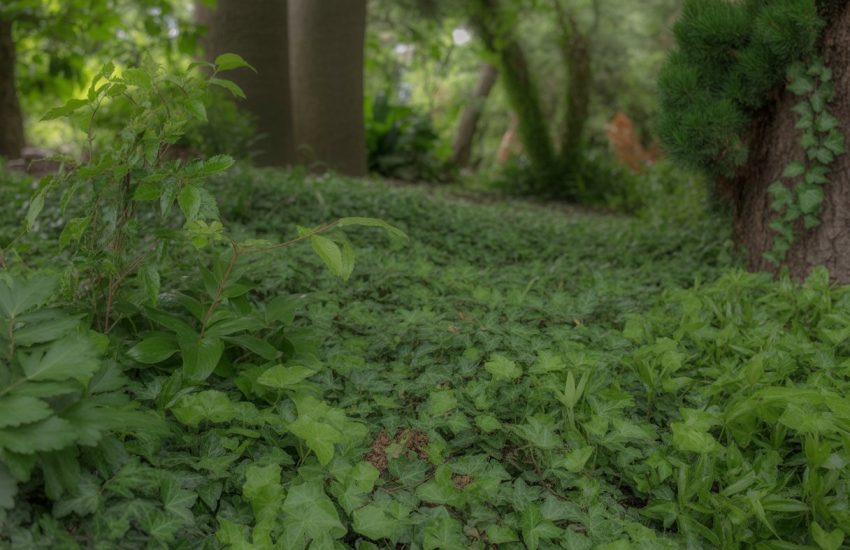Flowering Cherry Trees : Plant, Grow & Care
Flowering Cherry Trees have decorative and productive appeal in a garden, with colorful leaves in the fall, gorgeous spring flowers, and some tasty fruits. You may also get container-friendly small and dwarf versions, which are ideal for kitchen garden ideas.
In addition, there are sweet cherry types, which produce lovely, plump cherries that may be eaten right from it, and sour types, which have fruits better suited for cooking, baking, or preserves. In this article, we learn many things about flowering cherries. For example, what kills this plant, how to care, how to plant, and the different types of flowering cherries, etc.
Beauty, rebirth, and transformation are all represented by them. Festivals are held worldwide to honor these magnificent blossoms, and they are prized for their breathtaking beauty. Cherry blossoms come in various forms and sizes, from magnificent vase shapes to lovely weeping variants. Cherry blossom season lasts around a month. However, depending on the conditions, an individual may only bloom for a week or two. Of course, they wouldn’t be as spectacular if they were always in bloom.
The brilliant flowers of ornamental cherries are well-known in the spring. In the summer, some varieties yield little cherry that is too acidic for our taste buds yet attract a variety of birds. Flowering cherry specimens are ideal for residential gardens since they require little maintenance. They provide year-round color and intrigue with seasonally-changing foliage, attractive bark, and magnificent blossoms.
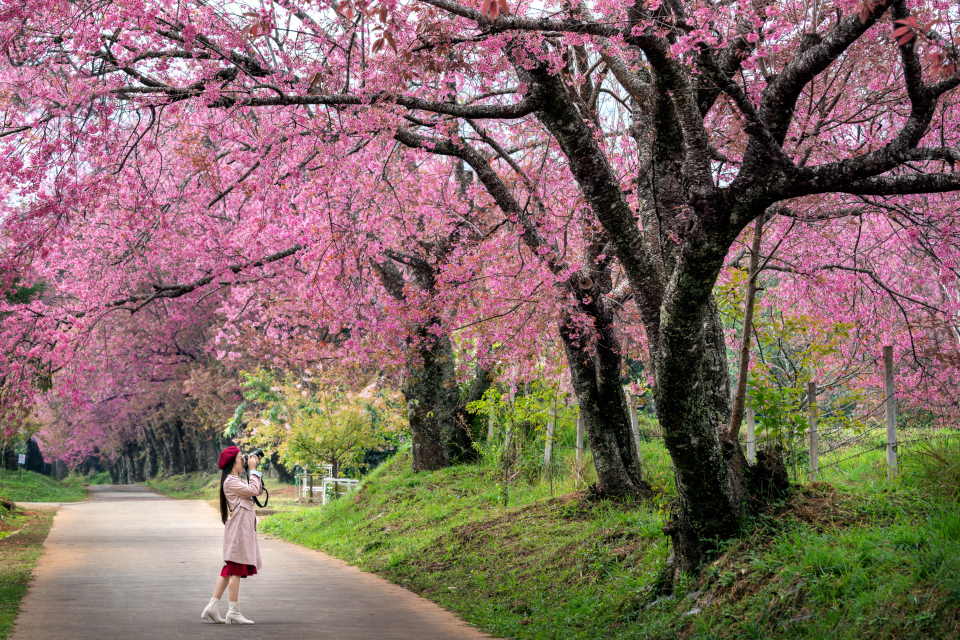
How to Plant Flowering Cherry Trees
The best time to plant flowering cherry depends on its specimens. For example, bare-root specimens should be planted in the early fall. When to plant them differentiate from container-grown specimens, they can be planted in the fall or after the last frost in the spring.
The best flowering occurs when the plant is in full sun. They should be planted in well-drained soil, away from high winds, and should not be exposed to extremes of heat or cold.
First, thoroughly hydrate the root ball of your potted stem with water. Dig a hole twice the width of the root ball and place your stem in it. The final planting depth for bare root should allow the crown or uppermost root to be level with or slightly above the surface.
The top of the root ball should be slightly visible, just above the original soil line. Put in the soil around the roots and give it plenty of water. Deep watering will flush out air pockets without pressing the soil too much. A newly planted cherry can benefit from an inch or two of mulch spread nearly as broad as the canopy.
Choose a specimen suitable for your zone, preferably from a local nursery that stocks types suited to your climate, for the greatest results. Make sure you have enough yard area for it to mature and grow properly.
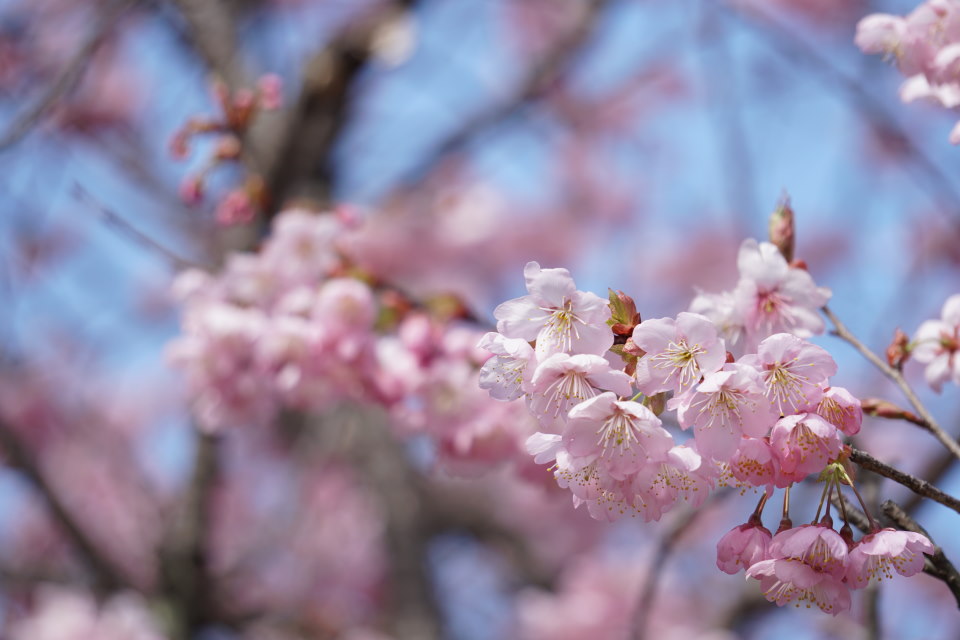
How to Care for Flowering Cherry Trees
Flowering blossoms grow at a pace of 1 to 2 feet each year, and once planted and established, they require minimal maintenance.
Only water it during the summer when it is really dry because they despise being planted in wet soil. Feed them once a year in the spring with a general granular fertilizer.
It should only be pruned if absolutely necessary. Only prune it while it is actively developing, which is from May to August. Cherry Blossoms may be found in practically any place in the United States and can live for 30 to 40 years. They are also suitable for residential gardens since they have bright autumn leaves, attractive bark, and speedy growth, requiring little care.
Lastly, the leaves should be examined regularly to keep illnesses and pests at bay.
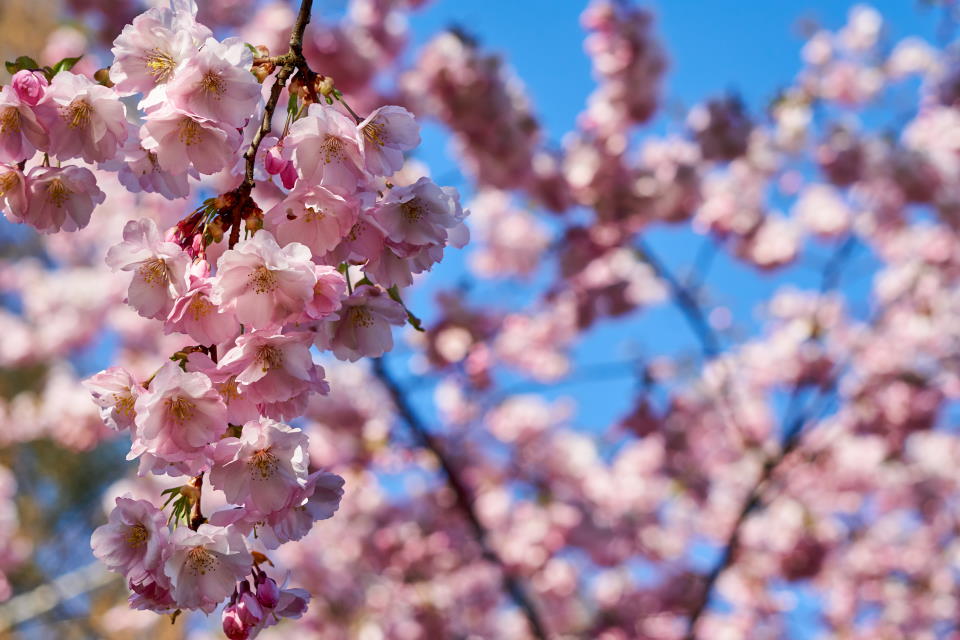
What Is the Average Size of a Flowering Cherry Tree?
From 8-foot-tall tart cherry shrubs to 80-foot-tall wild cherries, they come in all shapes and sizes. Depending on the species, most specimens yield fruit in U.S. Department of Agriculture plant hardiness zones. Their size is determined by their species, variety, and dwarfing rootstock.
Standard specimens tend to be 12 to 20 feet tall, with wider varieties reaching 50 feet or more. Furthermore, miniature types in containers attain heights of 6 to 10 feet, whereas wild types can reach 130 feet or more.
Types of Flowering Cherry Trees
They are adaptable and can be used in various garden types, including Japanese tea gardens, Asian or Zen gardens, cottage gardens, country gardens, etc. Planting a solitary specimen in a grass area or courtyard garden creates a stunning focal point.
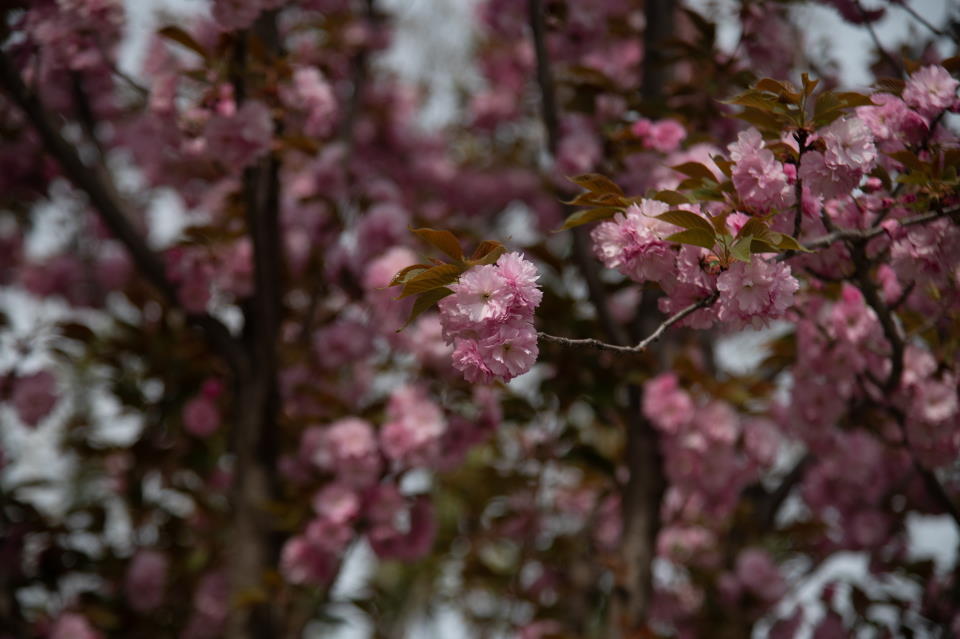
Yoshino Floweing Cherry
The Somei Yoshino Flowering Cherry Tree is Japan’s most common cherry specimen, having been cultivated during the Edo Period in Tokyo. Some Yoshino has five-petaled flowers that are faintly pink, almost white. Because their fresh leaves do not develop until after the peak of the flowering season, they have a very dramatic appearance.
Japanese Flowering Cherry
Various varieties of the Prunus serrulata species make up the beautiful ornamental specimens known as Japanese Flowering Cherries. The cultivars “Kansan” (Kwanzan) and “Sekiyama” are the most commonly offered commercially, the pure species that are rarely planted. Other blooming cherries are available, but these P. Serrulata varieties are popular in-home landscapes because they are smaller, tidy ones with no fruit and a very appealing upright, vase-shaped growth habit.
During the spring, they burst forth with beautiful white to pinkish-red blooms. They are often planted in the fall, well before the first frost, to allow them to grow roots and grow quickly (1 to 2 feet per year), but they have a limited lifespan.
Japanese Flowering Cherry Tree’s leaves, stems, and seeds contain trace quantities of cyanide, making them poisonous to pets, grazing animals, and people. Because cherry pits are the most prevalent source of human poisoning, human toxicity is uncommon with Japanese blooming cherries, which do not yield fruit.
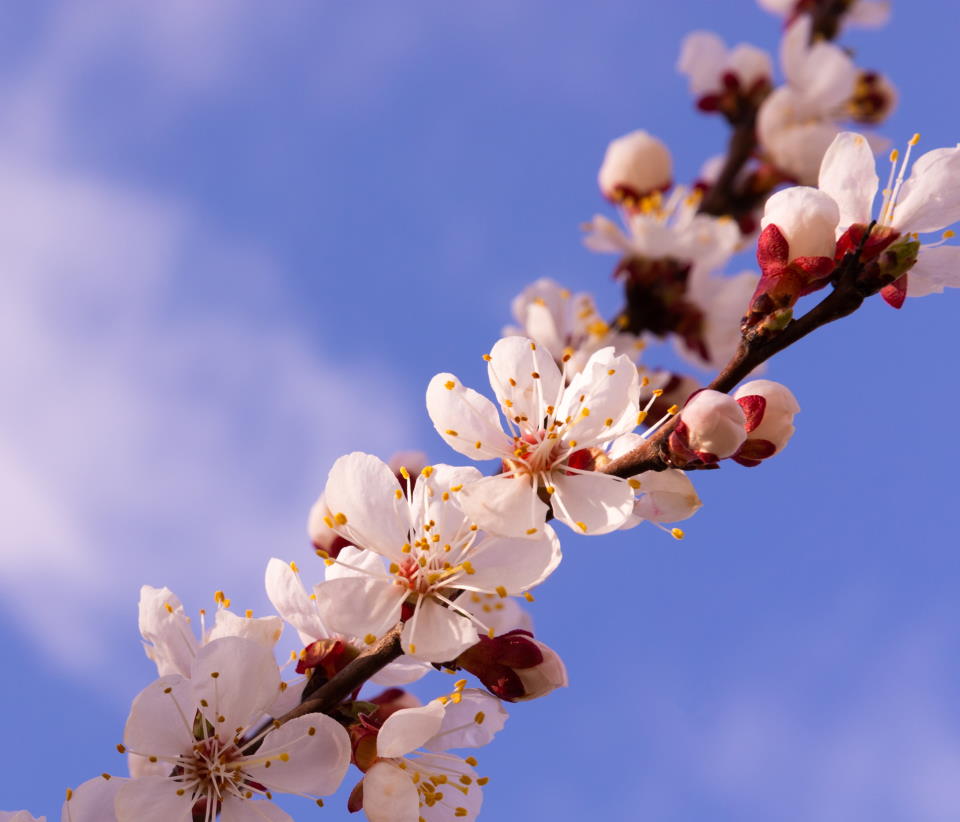
Kwanzan Flowering Cherry
Kwanzan Flowering Cherry Trees are known for their spectacular, deep pink double-blossoms, which make them some of the showiest cherries of the National Cherry Blossom Festival.
On the other hand, they are attractive all year, with leaves that emerge with a rich red-copper tint before turning green and then yellow in the fall. They work well as specimens, in a row, or as a bonsai in a container. Unfortunately, they only live for 15 to 25 years.
Kwanzan Flowering Cherries have a vase-like shape and serrated leaves that develop to be about 4-5 inches long. Their leaves are reddish-copper when they first emerge, then turn a lustrous, deep green in the summer, then yellow and bronze in the fall. They reach a height of 30-40 feet and a spread of 30-40 feet, with a moderate annual growth rate of 12-24 inches.
The Kwanzan is the best flowering cherry because its blossoms aren’t just pink but double pink, meaning there are twice as many petals and blooms. It also blooms in enormous clusters of three or five blossoms, making it the thickest of all pink bloomings with a carnation-like appearance.
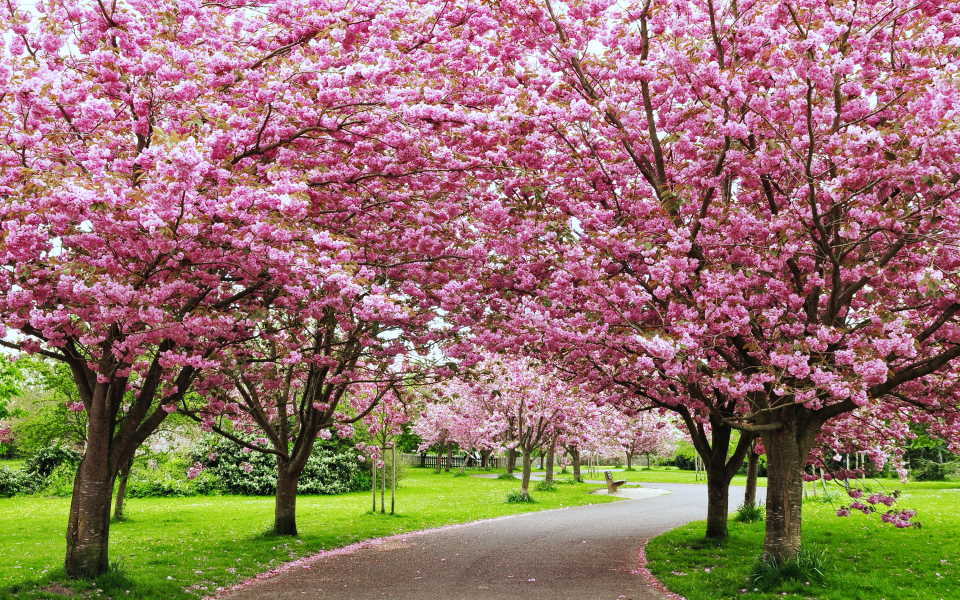
Okame Flowering Cherry
Okame Flowering Cherry Tree is a cross between the Taiwan flowering cherry (Prunus Campanulata) and the Fuji cherry (Prunus Sakura). It got its heat tolerance, low-chill blooming need, early flowering, quick growth, and deep-pink flower color from the former. On the other hand, it gained improved cold-hardiness from the latter. As a result, it is considered one of the best decorative types for the South.
Okame Flowering Cherry will eventually reach a height and width of 20 to 25 feet, with a neat, rounded, or oval shape. This makes it an excellent choice for planting on lawns, streets, patios, and courtyards. It should be planted in a sunny location with well-drained soil.
After the blossoms have faded, do any necessary pruning. The leaves become an excellent orange-red color in the fall, which is an added pleasure. Cut branches can also be forced into early bloom inside in the winter. Because wholesalers can easily grow Okame Flowering Cherry, it should be easy to find at local garden centers.
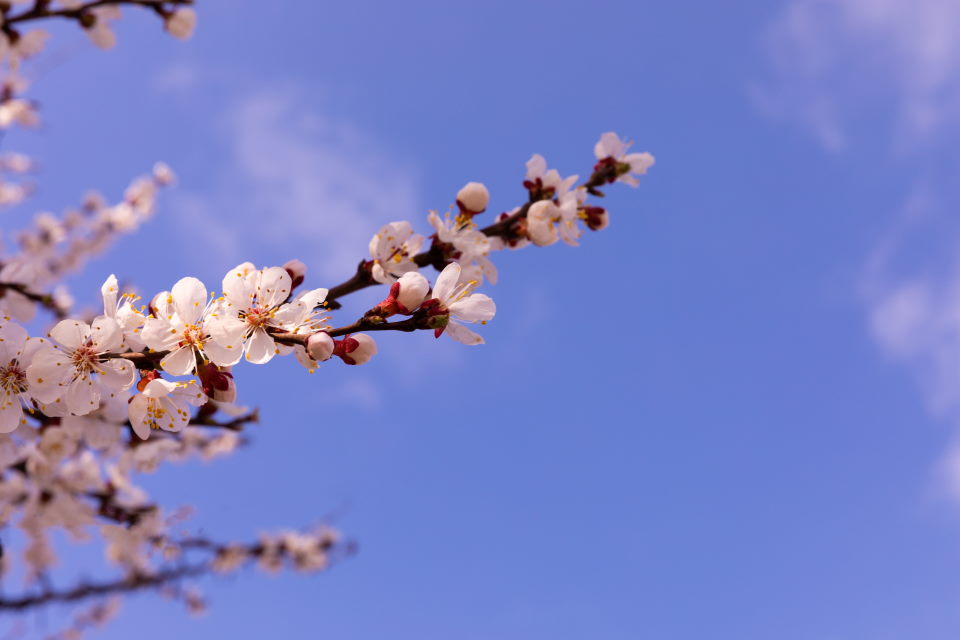
Autumn Flowering Cherry
Autumn Flowering Cherry Trees are magnificent and one-of-a-kind, producing little clusters of blossoms twice a year. They bloom again in the fall when many other specimens lose their leaves, after an early spring bloom in which deep pink buds open up to pale pink-white flowers in enormous clusters. The foliage of the Autumn Flowering Cherry tree changes with the seasons, giving them a fresh, beautiful look all year.
They have large straight branches that are delicate in appearance. It grows two feet or more per year until it reaches maturity, attaining a height of 20-35 feet and a width of 20-25 feet.
In the spring, the shiny, serrated, oblong-ovate leaves turn green, then gold and bronze, but they turn scarlet in the autumn. Its distinctive semi-double flowers begin as deep-pink buds that open to pale pink, then virtually white as they fully unfold. They produce small, black, fruit-like berries in the spring, which attract songbirds and other wildlife.
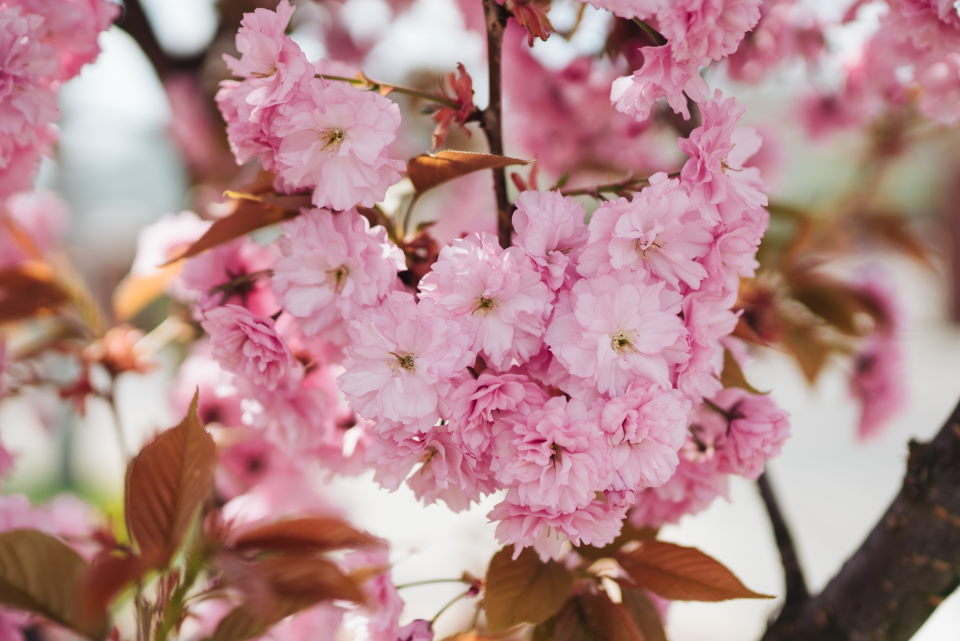
How to Trim and Best Time to Trim Flowering Cherry Trees
Flowering Cherry specimens can be a beautiful addition to any garden, but you must know how to trim them to maintain them in healthy and excellent condition. Whether your cherry is planted as an open-centered bush, trained against a wall or trellis in a fan or espalier, or a weeping variety, the pruning method you choose will change based on your type.
Pruning the Flowering Cherry tree should only be done if required. Younger ones should be pruned in the spring, while older ones should be pruned in the summer. Although they can be pruned all year, the best time to prune them is spring and summer. Because of the fungal spores and wet circumstances, diseases like silver leaf disease are more common in the winter.
The flowering cherry’s age determines the procedure for trimming. Cut back the central leader, or central trunk, in the first year of pruning to foster the growth of lateral branches and regulate the form of the cherry. Next, choose around four well-spaced, broader laterals – side shoots – at least 18 inches above the ground in the second year and cut them in half.
These are going to be the primary branches. Cut the central stem to just below the top lateral and remove any side shoots below this. After these major laterals have generated their side shoots in the third year, cut back the strongest of them by half. Annual pruning will allow you to maintain control over its size.
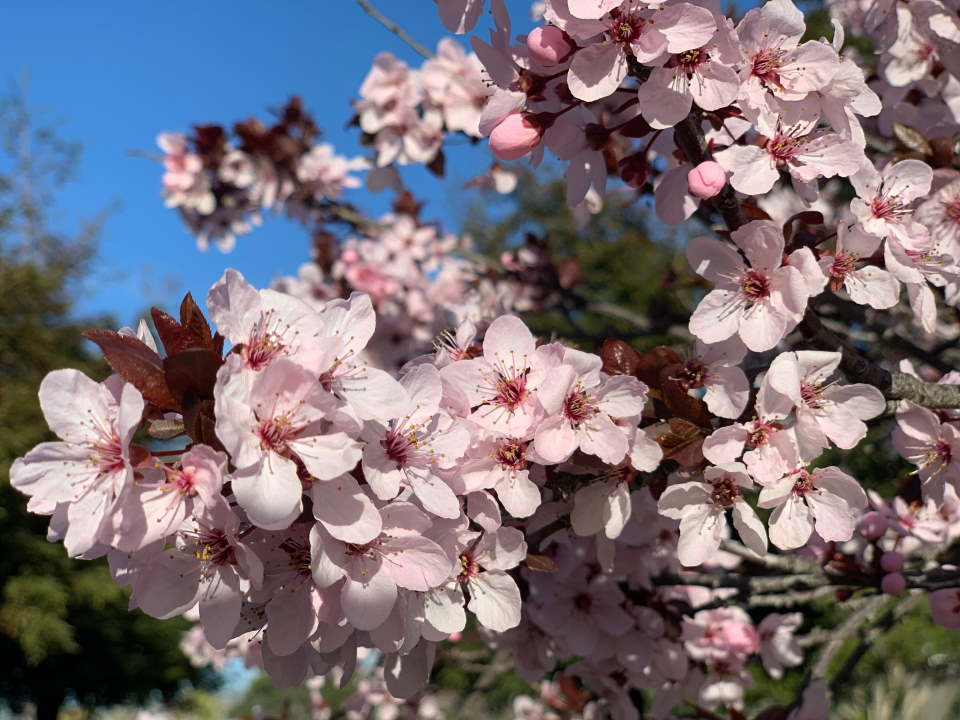
After they’ve established themselves, they need minor pruning. After it has established itself, trim to allow for the free movement of air, and cut any strong vertical developing branches that are crowding the center. Remove any branches that are crossing, are weak, are dead, are damaged, or are sick. Then, to induce the formation of fruit buds, reduce the tips of the surviving branches by a third of their new growth.
However, because the fruit is mainly produced on the previous year’s growth, a sour or acid cherry would require considerably more pruning than a sweet cherry. If you have an established acid cherry, in addition to removing any dead, damaged, or diseased branches as described above, you should cut back to the main branch or younger side-shoot approximately a quarter of the remaining older wood. To stimulate branching, cut any immature shoots over 12 inches long in thirds.
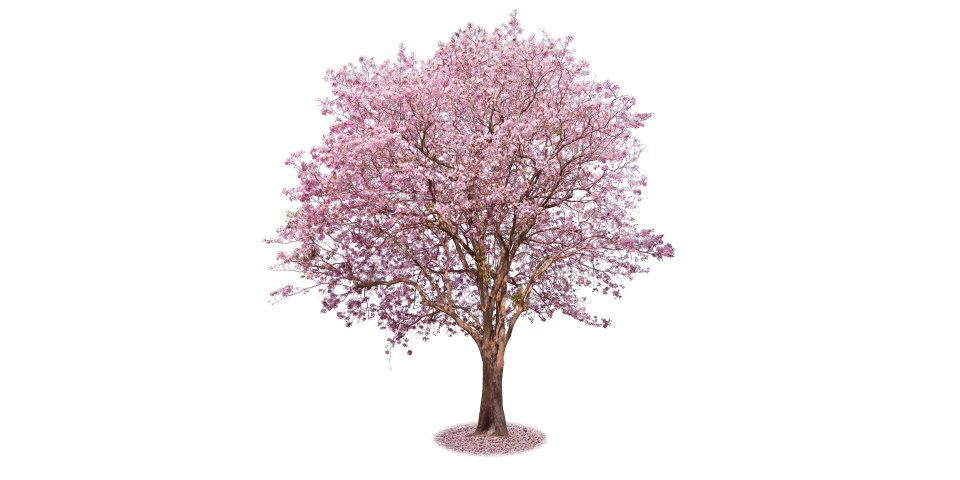
What Is the Best Flowering Cherry Tree?
The Kwanzan is the best flowering cherry because its blossoms aren’t just pink but double pink, meaning there are twice as many petals and blooms. The Kwanzan Flowering Cherry tree also blooms in enormous clusters of three or five blossoms, making it the thickest of all pink bloomings with a carnation-like appearance.
You may also be interested in:
Crape Myrtle Tree: Plant, Grow & Care

